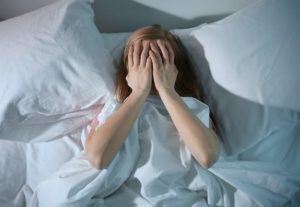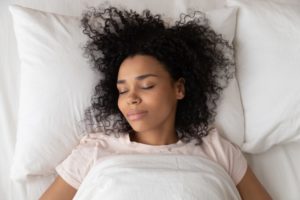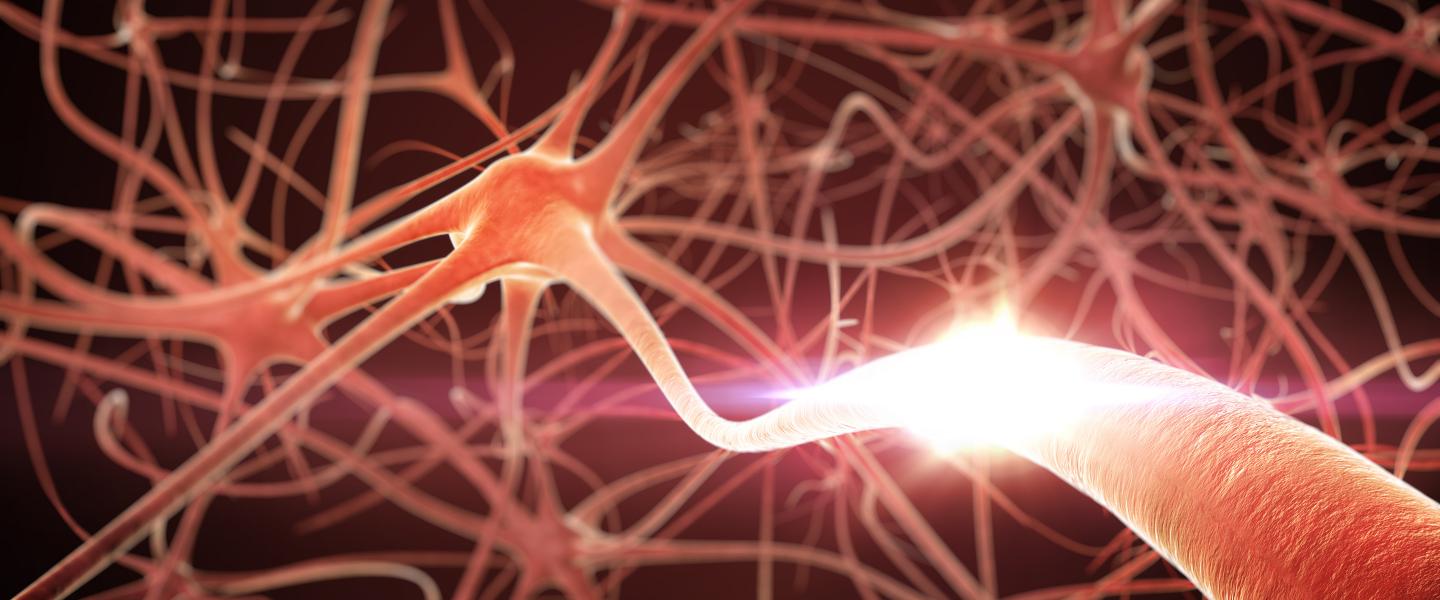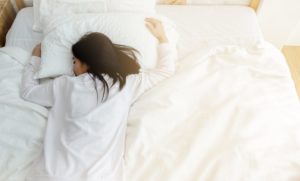Does Your Oxygen Level Drop When You Sleep?
One measure usually collected during a sleep study is blood oxygen level. People who have undergone a sleep study might wonder about reasons their blood oxygen levels are low while sleeping, or what normal oxygen levels are during sleep. We explore normal ranges for blood oxygen levels, as well as why someone may experience a change in blood oxygen level while sleeping, and when to see a doctor.
Is Your Troubled Sleep a Health Risk?
A variety of issues can cause problems sleeping. Answer three questions to understand if it’s a concern you should worry about.
What are Normal Oxygen Levels During Sleep?
Different people experience different blood oxygen levels, so there is not one single number that can be identified as the best blood oxygen level to have, whether awake or asleep. Blood oxygen that falls below 88% during a sleep study is officially categorized as low. However, most experts consider an oxygen saturation level of 95% or below potentially abnormal for a person at sea level. That said, someone who normally has a higher oxygen saturation, such as 99%, might be experiencing a low level for them after a drop to 96%.
Various health factors can impact a person’s blood oxygen level, as well as what range is considered normal for them. For example, a person with chronic obstructive pulmonary disease (COPD) may have a lower blood oxygen saturation as their baseline. For that reason, their blood oxygen could still be considered normal when it is as low as 88%. A blood oxygen saturation above 92% could even be problematic for a person with COPD.
“Oxygen is one of the most important fuels for our bodies and lower levels can cause serious harm to our health.”
Dr. Abhinav Singh, Sleep Physician
Normal blood oxygen levels shared by experts generally refer to blood oxygen levels of people who are at sea level. When a person is at an increased altitude, they often experience a lower blood oxygen level than normal. The higher the altitude, the lower average blood oxygen saturation.
| Blood Oxygen Level | Interpretation |
|---|---|
| 96 to 100% | Normal range |
| 93 to 95% | Borderline low |
| 89 to 92% | Low |
| 88% or lower | Dangerously low |
Reasons for Low Oxygen Levels While Sleeping
Blood oxygen levels normally drop a small amount during sleep, but not to low levels unless there is an underlying problem. A period of low blood oxygen during sleep is defined as less than or equal to 88% blood oxygen saturation lasting for five or more minutes. There are a couple of reasons a person may experience low blood oxygen levels, also called hypoxemia, while sleeping.

Sleep-Related Breathing Disorders
In sleep-related breathing disorders, like obstructive sleep apnea and central sleep apnea, a sleeper’s breathing stops or slows many more times than what is normal throughout the night. When breathing stops or slows, not as much oxygen is being taken in, so blood oxygen levels may temporarily drop. These levels usually increase back to normal after breathing begins again, but in people with very severe sleep apnea, blood oxygen levels may stay low for longer periods of time.
Sleep-Related Hypoxemia Disorder
Sleep-related hypoxemia disorder occurs when a person’s blood oxygen saturation level drops during sleep, and this drop is not related to changes in their breathing. Usually, these drops happen as the result of some other medical problem. For example, a person might experience sleep-related hypoxemia disorder because they have a lung disease or neurological disorder.
“Dropping oxygen levels during sleep may be an important clue towards a sleep related breathing disorder or other lung or neurological disorders. It is very important to consider a prompt evaluation.”
Dr. Abhinav Singh, Sleep Physician
When to Seek Medical Help
If you think you might be experiencing sleep-related troubles related to breathing or in general, talk to your doctor. They can assess your symptoms and medical history to determine if testing might be necessary. A sleep study, or polysomnography, is a test that can identify if your blood oxygen levels drop during sleep.
If you do have low blood oxygen during sleep due to a sleep disorder, like obstructive sleep apnea, treatment is available. The most common treatment type is positive airway pressure (PAP) therapy. The purpose of PAP therapy is to correct the breathing problems during sleep associated with sleep apnea, which then prevents associated drops in blood oxygen levels from occurring.

Still have questions? Ask our community!
Join our Sleep Care Community — a trusted hub of product specialists, sleep health professionals, and people just like you. Whether you’re searching for the perfect mattress or need expert sleep advice, we’ve got you covered. Get personalized guidance from the experts who know sleep best.
References
4 Sources
-
American Academy of Sleep Medicine. (2014). International Classification of Sleep Disorders — Third Edition (ICSD-3) (Online)., Retrieved August 27, 2023, from
https://aasm.org/ -
Mechem, C. (2022, March 4). Pulse oximetry. In P. Parsons (Ed.). UpToDate., Retrieved August 27, 2023, from
https://www.uptodate.com/contents/pulse-oximetry -
Rojas-Camayo, J., Mejia, C. R., Callacondo, D., et al. (2018). Reference values for oxygen saturation from sea level to the highest human habitation in the Andes in acclimatised persons. Thorax, 73(8), 776–778.
https://pubmed.ncbi.nlm.nih.gov/29054885/ -
National Institutes of Health. (2019, October 24). Researchers identify genetic variations linked to oxygen drops during sleep [Press release]., Retrieved October 13, 2023, from
https://www.nih.gov/news-events/news-releases/researchers-identify-genetic-variations-linked-oxygen-drops-during-sleep















































